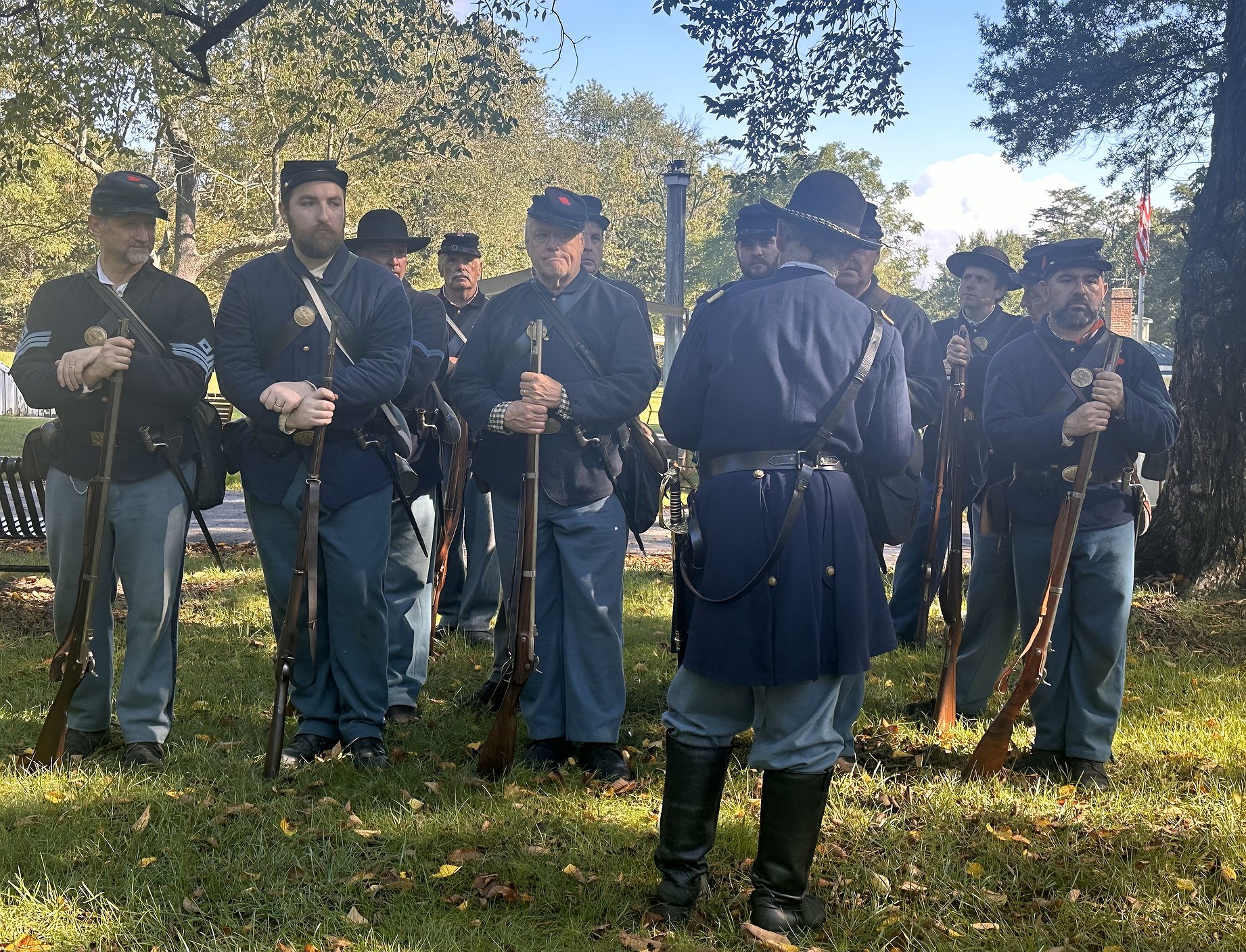Reenactor troops pose for a photo during Civil War Camp Day Sept. 28 at Fort Ward Museum and Historic Site.
Fort Ward, the best preserved of the system of Union forts and batteries built to protect Washington, D.C. during the Civil War, brought that history to life with its annual Civil War Camp Day Sept. 28 at Fort Ward Museum and Historic Site.
The popular living history event featured military and civilian reenactors in camp settings in and around the historic fort. The program showcased camp life activities, infantry and artillery drills and firing demonstrations, equipment displays, and civilian impressions.
“I tell the story of a Yankee schoolmarm,” said reenactor Susan Kelly. “My interest is to educate the public not just on the military side of the war but also on the civilian side.”
Among the living history units participating were the 28th Massachusetts Volunteer Infantry, Co. B, the 3rd U.S. Regular Infantry, Co. K, and the 1st U.S. Artillery, Co. Special interpretations included a U.S. Army Quartermaster tent, a Union company surgeon, and a soldier in the reconstructed Officers’ Hut portraying the daily routine and living quarters of an officer in the Defenses of Washington.
“The U.S. Army thrives on paperwork,” said 1st Lt. Geoff White as he occupied the officer’s hut. “Paperwork is a big part of it so officers needed larger quarters.”
Jim Wilson demonstrated the use of the telegraph during the Civil War.
“The telegraph was invented about 20 years before the Civil War began,” Wilson said. “President Lincoln and President Davis were able to communicate directly with troops in the field. Wires stretched for thousands of miles and allowed instant transmission. It really was the beginning of the electronics revolution.”
As a Northern schoolmarm, Kelly interpreted 19th-century education and pastimes for children, including the less than warm welcome schoolmarms received.
“Schoolmarms were cruelly treated,” Kelly said. “These women were hired by abolitionist groups and churches to come south. And while the local people would tolerate a Union soldier, the schoolmarm was their worst enemy for teaching Northern ideas to their children. There were no schoolhouses so teaching was sometimes done on the battlefield, sometimes in burned out buildings - wherever they could hold classes.”
In addition to the living history displays, the 8th Green Machine Regiment Band performed a concert of 19th century music on authentic period instruments.
Fort Ward Museum interprets the site's history with exhibits on Civil War topics, education and interpretive programs, tours, and living history activities throughout the year. The Museum also interprets Alexandria as an occupied city and the city's role as a vital Union Army crossroads. About 90 percent of the fort's earthwork walls are preserved and the Northwest Bastion has been restored and reconstructed to its original condition.
www.alexandriava.gov/FortWard

